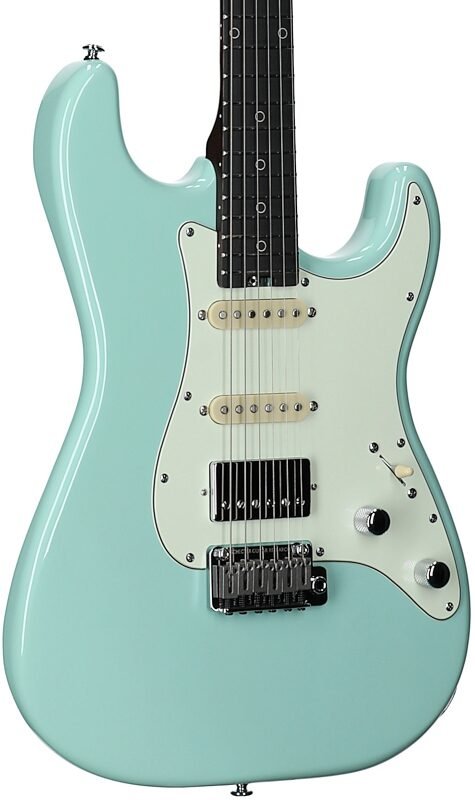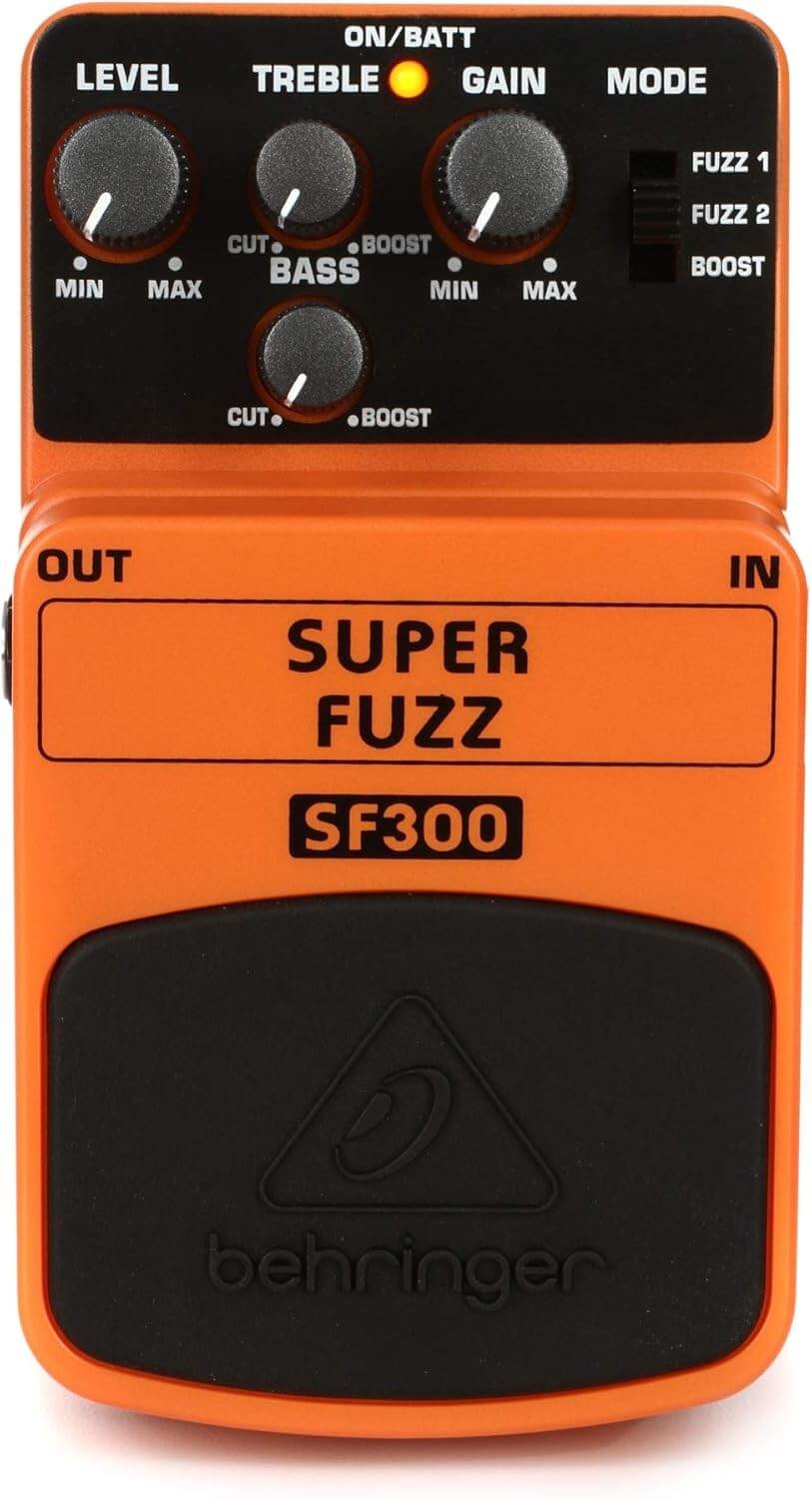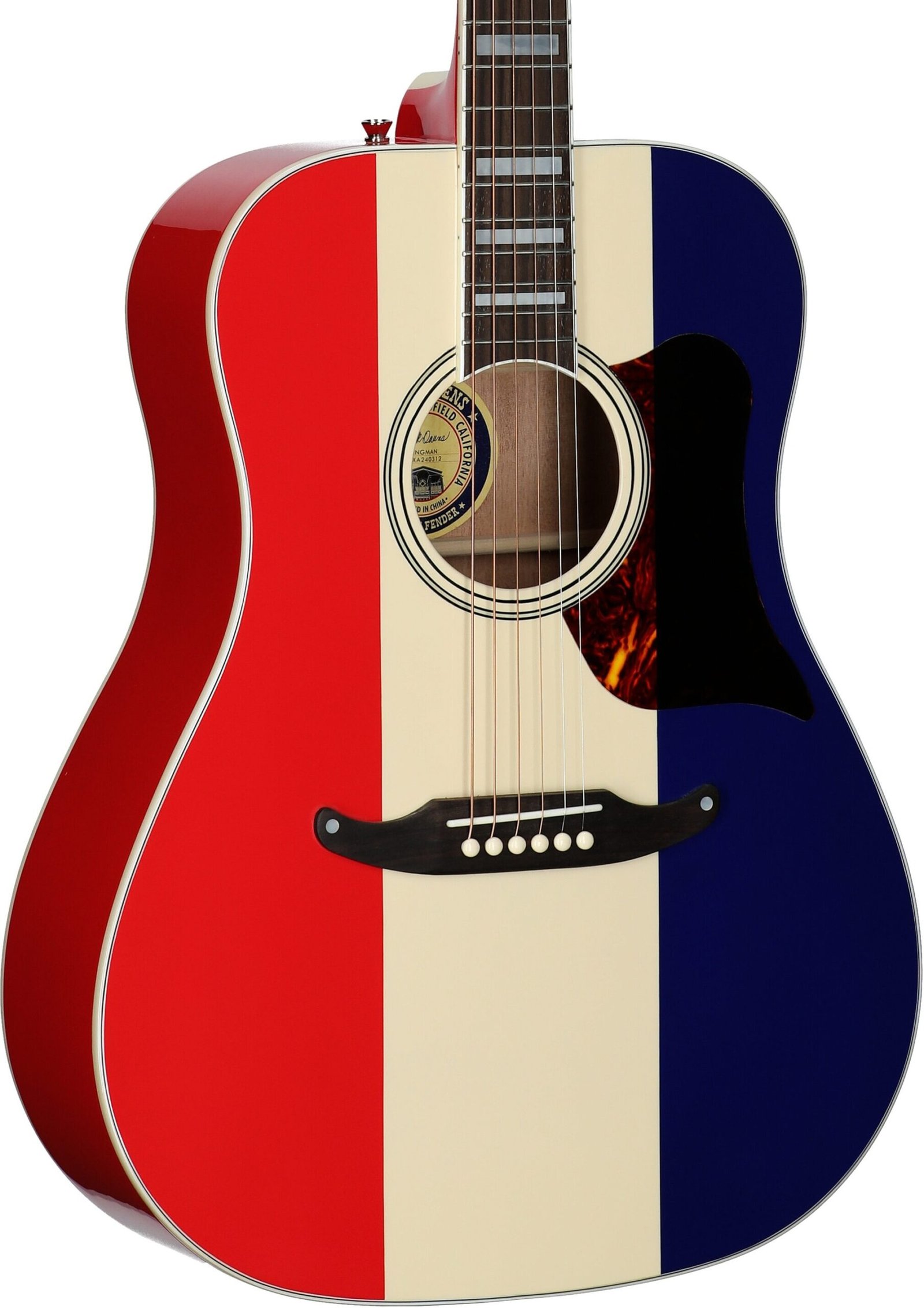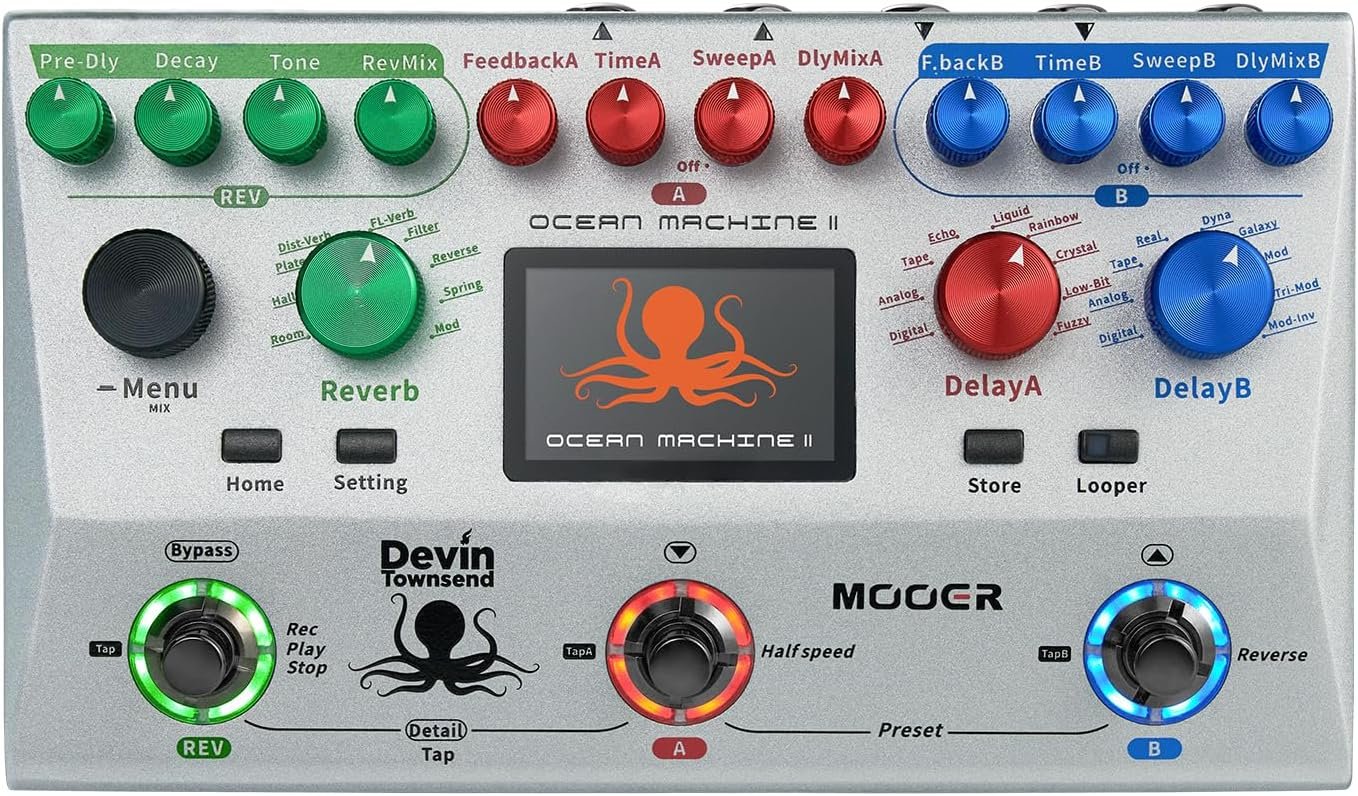Introduction to Fuzz and Distortion Effects
Fuzz and distortion effects have played pivotal roles in shaping modern music across various genres. Initially, these effects emerged in the late 1950s and early 1960s, primarily used by
guitarists seeking to innovate their sound. The revolutionary fuzz tones found favor in rock music, notably with artists such as Jimi Hendrix and The Rolling Stones, who exploited these effects to create a gritty and powerful sonic experience. As music evolved, so too did the applications of fuzz and distortion, leading to their acceptance in other genres, including metal, punk, and even pop.The essence of fuzz is to generate an aggressive, saturated sound that can add depth and texture to a performance. It works by clipping the audio signal, adding harmonic and inharmonic frequencies that result in a rich and complex tone. Conversely, distortion, while similar, typically aims to enhance the aggression, sustain, and overall volume of the sound without overly compromising clarity. This subtle difference creates a vast palette from which musicians can draw, allowing for experimentation with a diverse range of tones and effects.Among the many tools at a musician’s disposal, pedals such as the Behringer SF300 3-Mode Fuzz Distortion Effects Pedal have become indispensable. This particular model offers unique versatility with its three distinct modes, enabling artists to explore different sonic textures ranging from classic fuzz to more contemporary distortion. By incorporating such devices into their rigs, musicians are equipped to craft unique soundscapes, pushing traditional boundaries and elevating their artistic expression. The understanding of fuzz and distortion effects serves as a foundation for delving deeper into more specific tools and techniques, enriching the overall musical experience.
Overview of the Behringer SF300 Pedal
The Behringer SF300 3-Mode Fuzz Distortion Effects Pedal is a versatile tool designed for musicians seeking to enhance their sound with customizable effects. Renowned for its user-friendly interface, this pedal offers three distinct modes: Fuzz, Distortion, and Overdrive. Each mode provides a unique tonal quality, allowing users to explore a vast range of sonic possibilities. Musicians can easily switch between modes, making it a convenient option for live performances and studio sessions alike.A standout feature of the Behringer SF300 is its straightforward control layout, which includes a Level, Tone, and Fuzz knob. This design enables players to dial in their desired sound quickly and effectively, ensuring that achieving an ideal tone becomes an effortless process. The Level knob allows users to adjust the overall output of the signal, while the Tone knob lets them shape the sound to fit their preferences. The Fuzz knob is crucial for defining the intensity of the fuzz effect, creating a thick, rich distortion that can range from subtle to aggressive.
Understanding the 3 Modes: Fuzz, Distortion, and Overdrive
The Behringer SF300 3-Mode Fuzz Distortion Effects Pedal offers musicians the versatility of three distinct modes: fuzz, distortion, and overdrive. Each mode produces a unique tonal character that can significantly affect the overall sound of a performance, appealing to various genres of music.The fuzz mode is known for its rich, saturated tones and pronounced harmonic overtones. This setting typically generates a thick and creamy texture that can enhance the sustain of notes and chords. Fuzz is particularly popular in genres like rock, grunge, and psychedelic music, where a more aggressive tone is desired. Artists seeking to evoke a sense of vintage warmth often turn to the fuzz mode, as it can recreate the characteristics of classic guitar sounds played through older
amplifiers.Transitioning to the distortion mode, the Behringer SF300 delivers a more defined and aggressive edge. Distortion is favored in heavy metal and hard rock styles, where the clarity of individual notes plays a crucial role. This mode allows for a pronounced attack and a sharper articulation of riffs, making it ideal for intricate guitar solos. The distortion settings can be adjusted to attain various intensities, providing flexibility that suits diverse musical contexts.Lastly, the overdrive mode approaches a subtler range of dynamic response, imitating the natural saturation produced by amplifiers pushed to their limits. Overdrive excels in blues, country, and classic rock music, offering a warm, smooth clipping effect that enhances a guitarist’s expressiveness without overwhelming a mix. Musicians often prefer this mode for rhythm playing and lead lines where a touch of warmth and character is required.Understanding these modes is essential for any musician looking to unlock their sound using the Behringer SF300 3-Mode Fuzz Distortion Effects Pedal, as each setting serves a unique purpose in shaping the tone and character of their music.
How to Use the Behringer SF300: A Step-by-Step Guide
Using the Behringer SF300 3-Mode Fuzz Distortion Effects Pedal effectively requires a clear understanding of its features and how to integrate it into your musical setup. Begin by connecting the pedal to your instrument. The input jack on the Behringer SF300 is designed for a standard quarter-inch plug, making it compatible with
electric guitars, basses, and even
keyboards. Use a good quality instrument cable to ensure a clean signal transmission.Once connected, the next step involves powering the pedal. The Behringer SF300 can be powered using a 9V battery or an external power supply. If you are looking for longer use without interruptions, an adapter might be more suitable, as it allows for prolonged play without the risk of battery depletion.Adjusting the settings on the SF300 is straightforward. The pedal features three distinct modes, which can be selected using the toggle switch. Experimenting with these modes will reveal the range of fuzz textures available. Each mode is crafted to provide a unique tonal character, allowing for various distortion effects to suit your musical style. Start with the ‘Fuzz’ setting to experience a warm, fuzzy distortion, and gradually explore ‘Tone’ and ‘Level’ controls to shape the character of your sound.It’s advisable to begin with moderate settings and gradually enhance them while playing. This approach not only helps in maintaining control over the sound but also allows for a deeper understanding of how the Behringer SF300 interacts with your instrument. Additionally, do not hesitate to combine the pedal with other effects, such as chorus or delay, to expand your sonic palette. Exploring different combinations of effects will unlock a range of creative possibilities, thereby fully utilizing the potential of the Behringer SF300.
Inspiring Sound Examples and Applications
The
Behringer SF300 3-Mode Fuzz Distortion Effects Pedal provides musicians with a diverse array of sound options that can enhance various musical genres. This pedal is noted for its versatility, allowing it to seamlessly adapt to different styles, from rock to jazz, and even electronic music. In essence, it serves as a crucial tool for guitarists seeking to explore new sonic territories.For rock enthusiasts, the fuzz mode of the Behringer SF300 can emulate classic sounds reminiscent of the iconic fuzz pedals used by legendary bands in the 60s and 70s. Guitarists can achieve that creamy, sustaining distortion, which adds richness and warmth to solos, making them stand out in a live setting. The defined mid-range characteristics of the pedal can bring clarity to heavy riffs while still maintaining the grittiness associated with fuzz pedals.On the other hand, for those experimenting with grunge or alternative music, the
Behringer SF300 can unleash a chaotic yet controlled distortion that invites musicians to delve into layered soundscapes. It can produce thick chords and eerie overtones that lend well to the genre’s explorative nature. Furthermore, this pedal can also aid in crafting intricate sound textures, which are pivotal in styles like shoegaze or post-rock.In genres such as jazz, the pedal’s fuzz capabilities can be utilized creatively to enrich smooth chord progressions and lead lines. Jazz guitarists can take advantage of the pedal’s flexible settings to incorporate light fuzz for a warm, rounded sound, or push the distortion further for a more aggressive tone that highlights improvisational skills.To inspire users further, audio clips and links to videos demonstrating the
Behringer SF300 3-Mode Fuzz Distortion Effects Pedal in action can be a valuable resource. These examples showcase not only the pedal’s distinctive capabilities but also illustrate how different artists harness its potential within their unique musical contexts.
Comparing the SF300 with Other Effects Pedals
When evaluating the Behringer SF300 3-Mode Fuzz Distortion Effects Pedal, it is essential to consider how it stacks up against other pedals in the same category. Several factors such as price, sound quality, features, and user reviews can significantly influence a musician’s choice of effects pedal.In terms of pricing, the Behringer SF300 is notably competitive. Positioned as an affordable option within the fuzz distortion segment, it often attracts first-time buyers and seasoned musicians alike who seek a versatile and budget-friendly solution. Contrasted with higher-end models from brands like Boss or Electro-Harmonix, which may offer advanced features, the SF300 delivers solid performance for its price point. This affordability does not compromise its capability, a crucial point for many music enthusiasts.Sound quality is another paramount factor. The Behringer SF300 boasts three distinct modes for fuzz, distortion, and overdrive, enabling users to explore a wide range of sonic possibilities. Compared to traditional pedals that might only offer a single effect, the SF300 provides exceptional versatility, catering to various musical genres. User reviews often highlight its robust sound profile, especially for guitarists who appreciate a gritty yet articulate tone.In terms of features, the Behringer SF300 offers intuitive controls, including level, tone, and gain knobs, making it easy for musicians to sculpt their sound without overwhelming complexity. Other pedals may include additional functions like built-in delay or modulation effects, which can add complexity but may not always provide the desired fuzz sound. Hence, the simplicity of the SF300 appeals to those seeking a straightforward fuzz experience.Ultimately, while there are numerous effects pedals available, the Behringer SF300 3-Mode Fuzz Distortion Effects Pedal stands out as a well-rounded option. Its combination of affordability, sound quality, and user-friendly features demonstrates its competitive edge in today’s market. This makes it a worthwhile consideration for both budding guitarists and experienced professionals.
Testimonials: What Musicians Are Saying
The Behringer SF300 3-mode fuzz distortion effects pedal has garnered attention from a variety of musicians across different genres. Many players appreciate its versatility and affordability, making it a popular choice for both beginners and seasoned professionals alike. One guitarist remarked, “The SF300 allows me to effortlessly switch between different fuzz tones, making it an incredibly useful tool in my setup.” This flexibility is a recurring theme in several reviews, highlighting how the pedal accommodates diverse musical styles while maintaining quality sound.Another musician noted, “For the price, the Behringer SF300 delivers a level of performance that competes with much higher-end pedals.” This sentiment is echoed by many users who believe that the pedal provides exceptional value, offering robust features such as three distinct modes that cater to various sonic preferences. The fuzz tones range from subtle warmth to aggressive distortion, allowing musicians to find the right balance for their unique sound. Low-end retention and clarity during heavy distortion settings are frequently praised, as they contribute to maintaining the integrity of the original tone.However, not all feedback has been purely positive. Some users mentioned minor concerns regarding the pedal’s durability. One guitarist shared, “While I love the tones I get from the SF300, I do worry about how it holds up during rigorous gigs.” These constructive critiques are essential for potential buyers to consider, as they highlight the pedal’s limitations in certain contexts. Overall, the testimonials surrounding the Behringer SF300 3-mode fuzz distortion effects pedal indicate that it is a reliable, versatile, and economically sound option for many musicians, merging quality performance with accessibility.
Where to Buy and Price Considerations
When it comes to purchasing the Behringer SF300 3-Mode Fuzz Distortion Effects Pedal, prospective buyers have a variety of options available both online and at physical retail locations. Online platforms such as Amazon, Sweetwater, and Guitar Center are popular choices, often providing comprehensive descriptions, customer reviews, and competitive pricing. These retailers may also offer convenience in terms of home delivery and easy return policies. Additionally, it’s advisable to check the official Behringer website for information on authorized dealers, which ensures authenticity and warranty support.Physical music stores can also be an excellent option for purchasing effects pedals. Retailers such as Sam Ash or smaller, local music shops provide the benefit of in-person inspection. This allows musicians to test the Behringer SF300 pedal before committing, providing a hands-on understanding of sound characteristics and compatibility with other gear. Furthermore, knowledgeable staff at these stores can offer personalized guidance and share insights about the pedal’s features, thus enhancing the shopping experience.In terms of pricing, the Behringer SF300 generally falls within a budget-friendly range, making it accessible to both novice musicians and seasoned professionals. Prices can vary depending on the retailer, promotional offers, and regional differences. It is advisable to shop around and compare prices among different vendors. Discounts or bundled deals may also be available, particularly during seasonal sales events or promotional periods, increasing potential savings.When buying effects pedals, consider factors such as warranty, return policies, and shipping costs for online purchases. Ensuring that one is obtaining the Behringer SF300 3-Mode Fuzz Distortion Effects Pedal from a reliable source will prevent issues with product authenticity and support. By thoroughly exploring these options, users can find the best deal while acquiring an excellent addition to their music equipment collection.
Conclusion: Is the Behringer SF300 Right for You?
Choosing the right effects pedal can significantly shape your sound, and the Behringer SF300 3-Mode Fuzz Distortion Effects Pedal is designed to cater to a wide range of musical styles. Throughout this guide, we explored the pedal’s unique features, including its three distinct settings that offer versatility for different genres—from grunge and classic rock to experimental music. For guitarists seeking to explore various sonic textures, the SF300 stands out with its user-friendly interface and affordability.It is essential to consider how the Behringer SF300 fits into your overall musical context. If you are a beginner experimenting with distortion and fuzz effects, this pedal provides an accessible entry point without sacrificing quality. Its robust build indicates durability, ensuring that even frequent users can rely on it for live performances. Additionally, seasoned musicians might find its three modes beneficial for adding an extra layer of depth to their sound without complicating their setup.However, it is crucial to weigh your specific requirements and style. If you predominantly play genres that rely heavily on clean tones or require nuanced subtleties, you may need to consider other options that better cater to those demands. The Behringer SF300 is great for those looking for a distinctive fuzz character, but understanding how this pedal interacts with your current equipment is vital.Ultimately, whether the Behringer SF300 3-Mode Fuzz Distortion Effects Pedal is the right choice for you depends on your musical aspirations and the sounds you wish to achieve. Take the time to evaluate how this pedal could enhance your performance, and you are likely to make an informed decision that aligns with your artistic vision.




